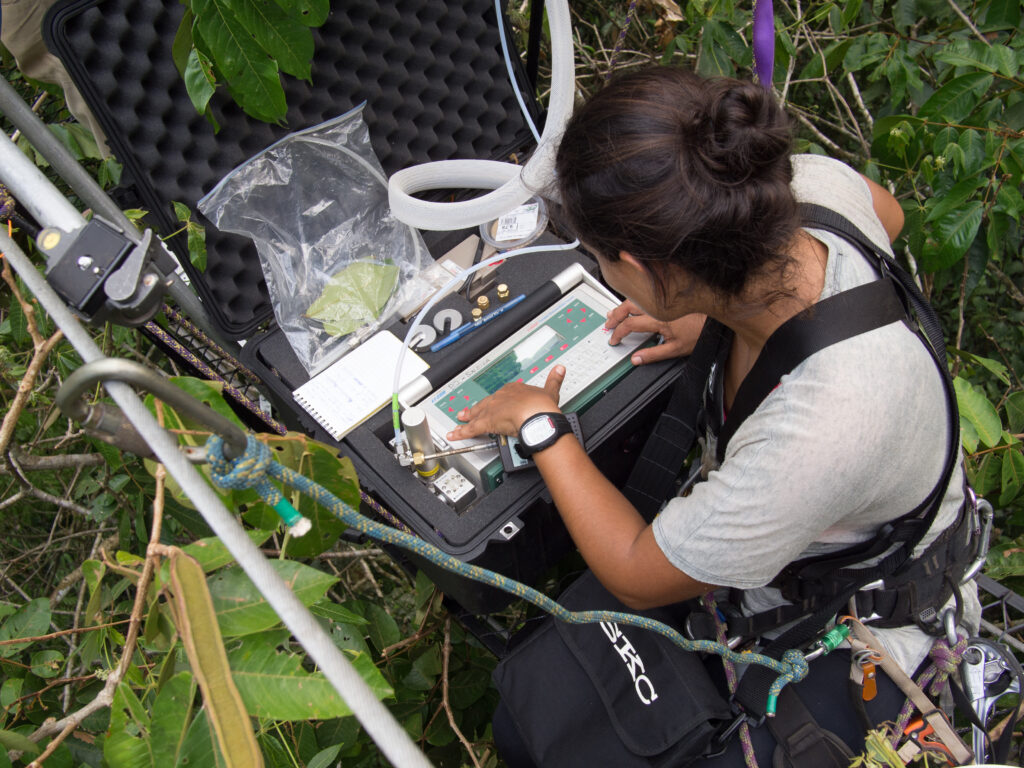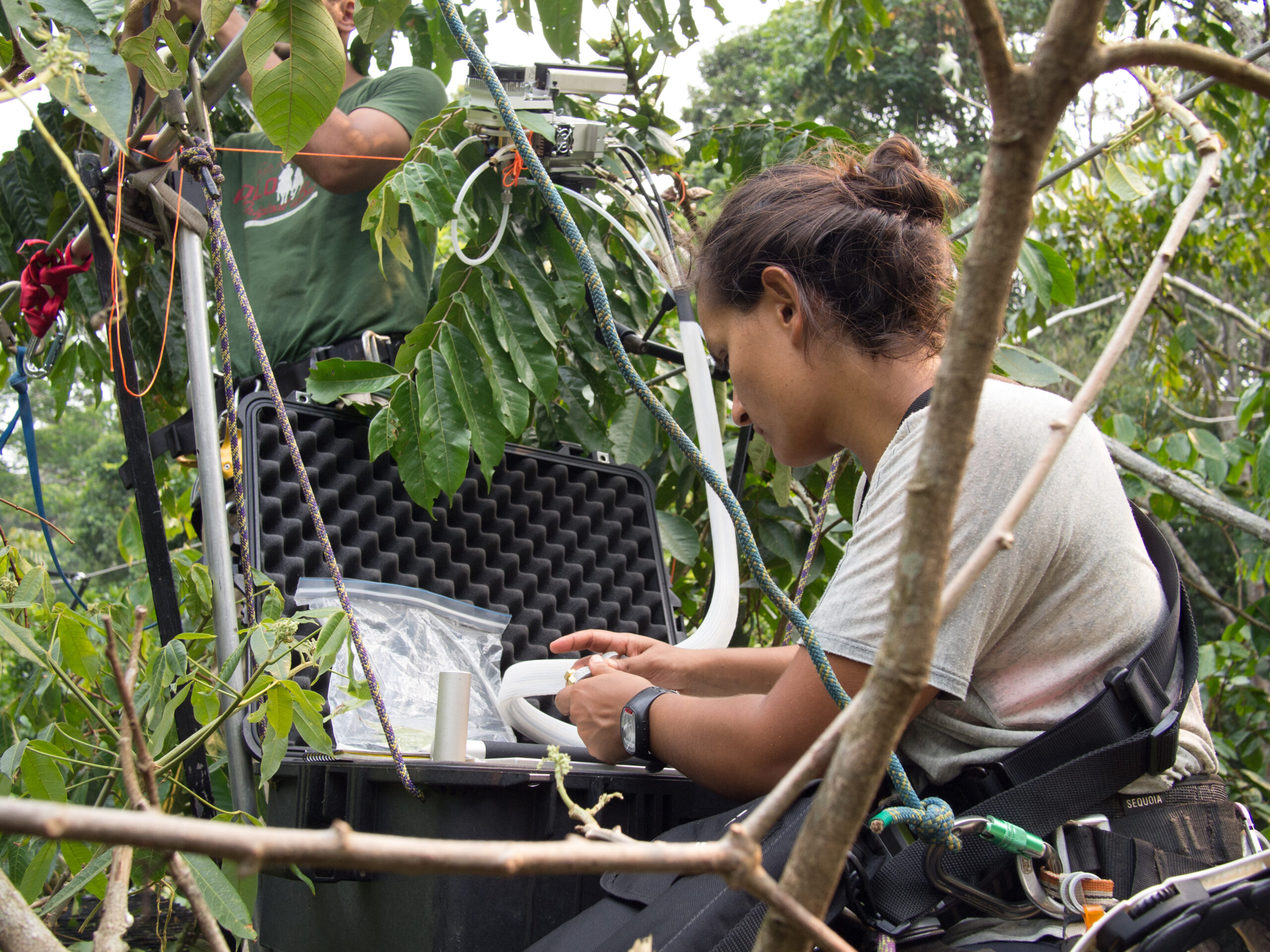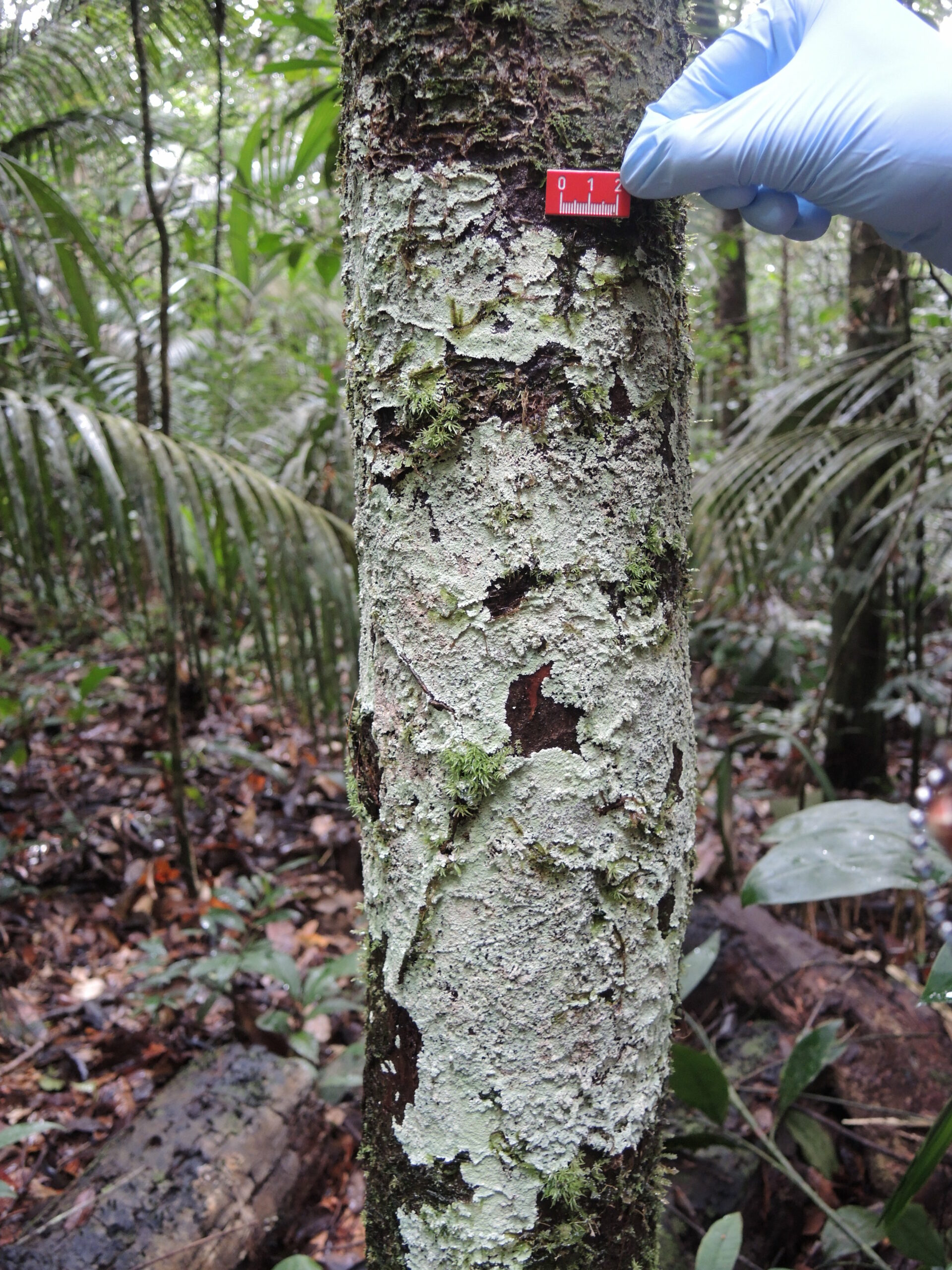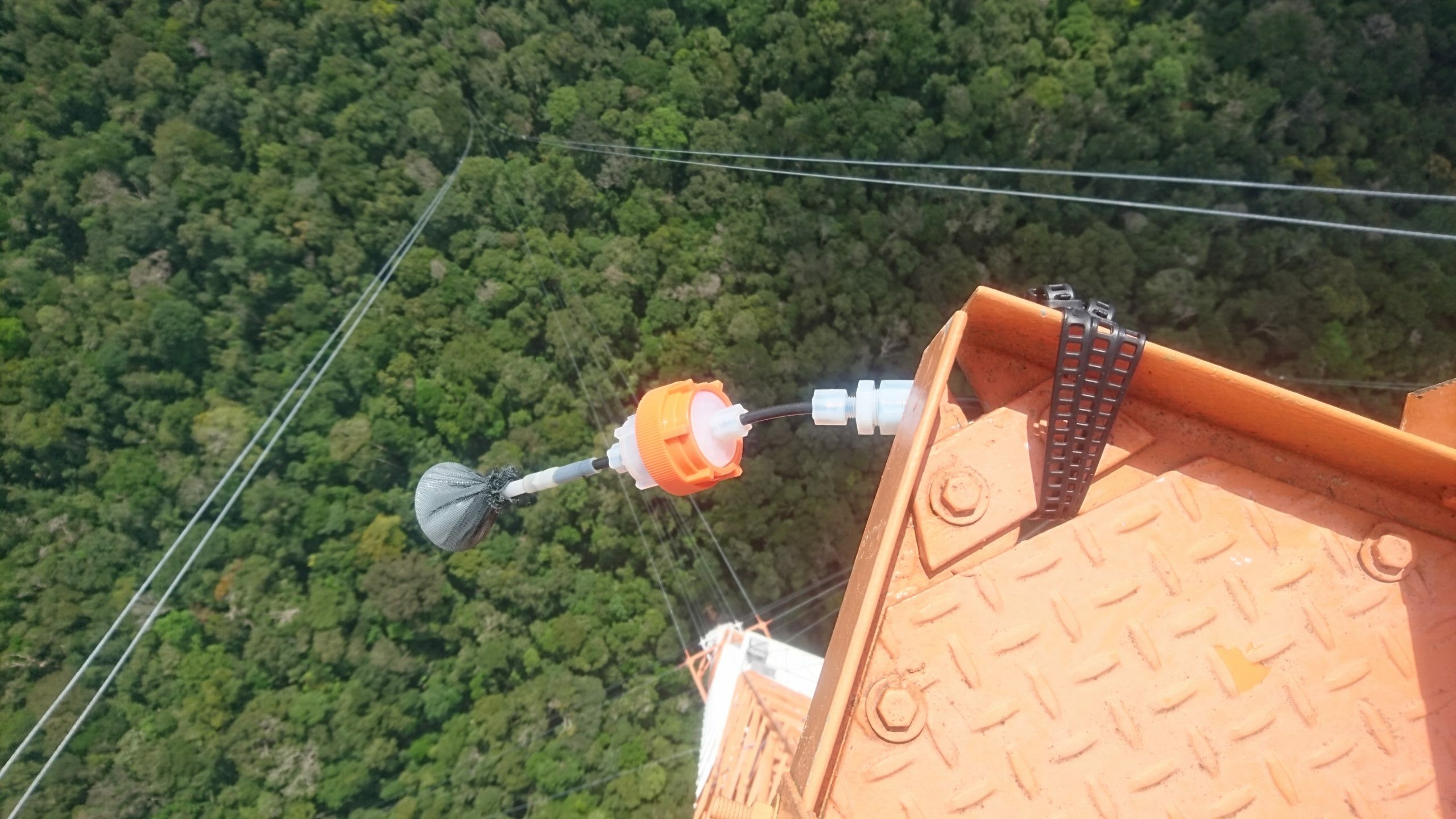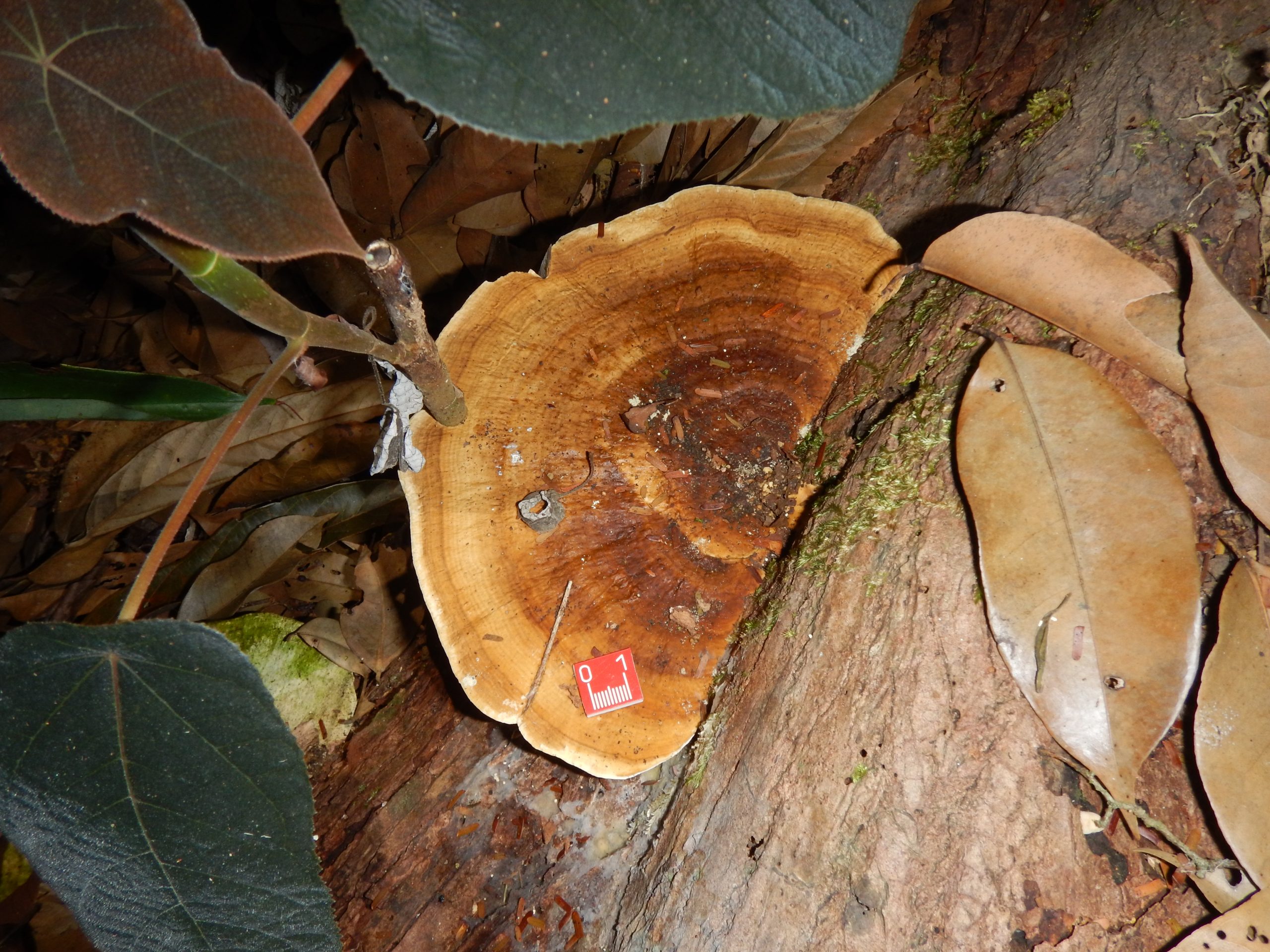If you ever walked through nature and have taken a deep breath, you already know BVOCs. Biogenic volatile organic compounds, short BVOCs, are emitted mainly by plants. BVOCs are incredibly diverse, but the most abundant ones are called isoprenoids. They are represented by isoprene (a short carbon chain), monoterpenes (a carbon chain twice as long) and sesquiterpenes (three times as long). Out of all plants, trees are the most important emitters. And tropical trees alone contribute around 80% to the global emissions of isoprenoids.
BVOCs, and isoprenoids, in particular, serve many functions, and they are responsible for the typical plant scents. But plants also use BVOCs to send messages to other plants or even insects like pollinators or predators of herbivores. In addition, plants utilize those compounds to protect plant cells, and they react with other chemicals in the atmosphere. Through this process of emitting reactive gases plants actively contribute to cloud formation. Put very simply, they make their own rain.
BVOC emissions in the Amazon have been studied for decades, and scientists have already learned a lot about them. But we still don’t fully understand when and under what conditions tree species or even individual trees emit more or fewer isoprenoids. Specifically, we lack detailed knowledge on the emission capacity of trees in response to their environment, such as weather and climate conditions, the characteristics of their environment, etc. In addition, most studies have focused on isoprene. To address this, Eliane Gomes Alves and her colleagues measured the emission capacities of isoprene, monoterpenes and sesquiterpenes on trees. Specifically, they looked at three tree species that are hyperdominant in the Amazon. They did this across seasons and environmental gradients in the vicinity of ATTO.
The team’s most important finding was that isoprene emissions declined during the shift from wet season to dry season. At the same time, emissions increased for those heavier monoterpenes and sesquiterpenes. In fact, one of the tree species the scientists looked at emitted sesquiterpenes only in the dry season, and increasingly so in the upland forests. Here, the groundwater table is much deeper than in the white-sand campina region. This means that is harder for the plants to access this water.
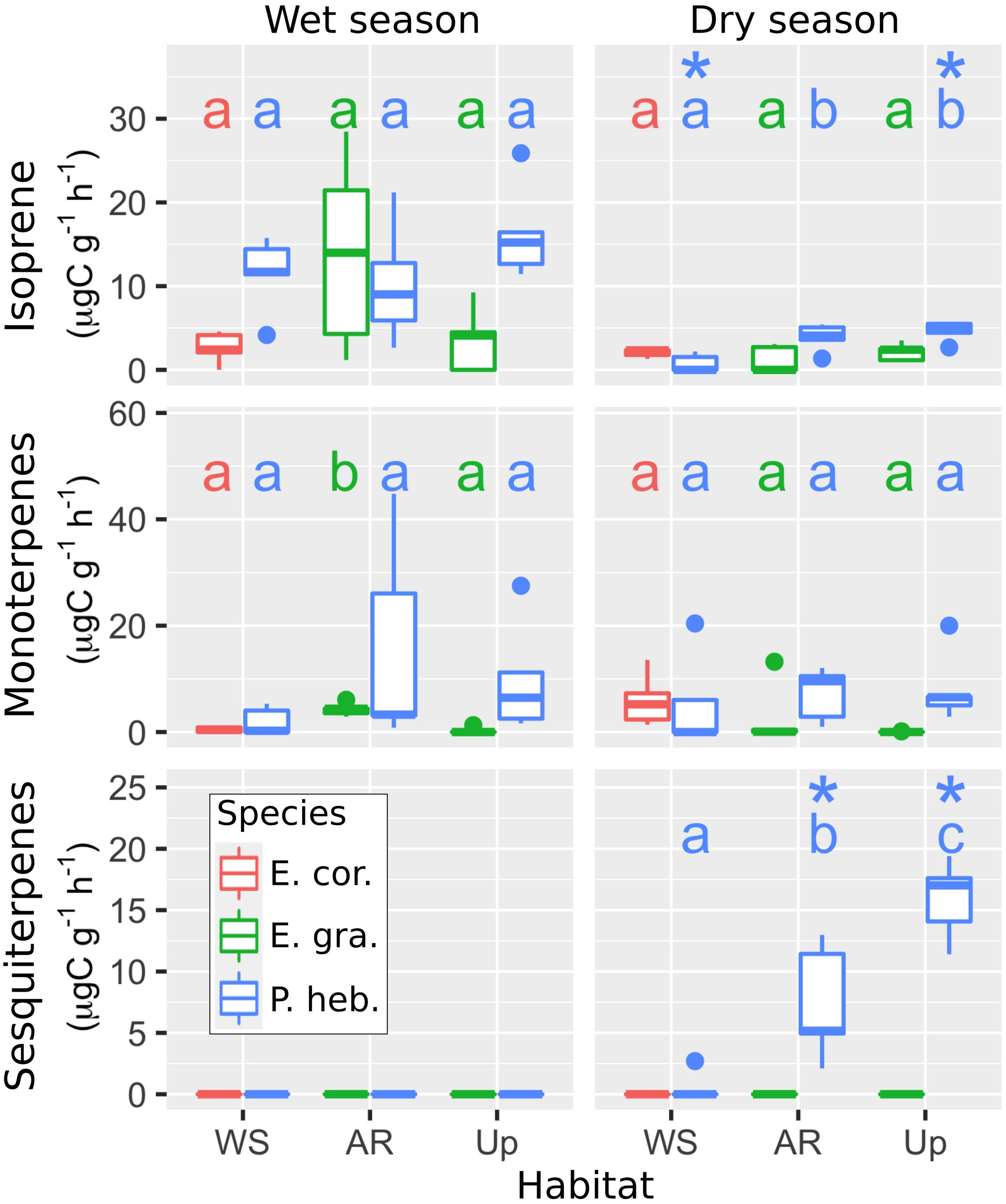
Eliane Gomes-Alves and her team concluded that trees shift towards emitting more monoterpenes and sesquiterpenes in response to abiotic stress, such as heat and drought. This means that it is crucial for future studies to measure monoterpenes and sesquiterpenes in addition to isoprene. As climate shifts towards longer, hotter and drier dry seasons in the Amazon, these emissions will become even more relevant. Understanding what plants emit them under what conditions, and how those compounds affect cloud formation and precipitation will improve our understanding of how the Amazon rainforest reacts to climate change.
Eliane Gomes Alves et al. published the paper “Seasonal shifts in isoprenoid emission composition from three hyperdominant tree species in central Amazonia” Open Access in the journal Plant Biology.
Similar articles
Direct measurements of OH radicals are rare and difficult to achieve. However, since they react with BVOCs, Ringsdorf et al. inferred them from isoprene measurements at ATTO. To do so, they applied a technique called ‘Dynamical Time Warping’ from the field of speech recognition. Akima Ringsdorf et al. published the study “Inferring the diurnal variability of OH radical concentrations over the Amazon from BVOC measurements” Open Access in Nature Scientific Reports.
Eliane Gomes Alves and her colleagues measured isoprene emissions at the ATTO 80-meter tower across three years to better understand how these emissions vary seasonally and under extreme climatic conditions like El Niño events. They also looked into which biological and environmental factors regulate the emission of isoprene to the atmosphere.
Mosses and lichen appear to play a previously overlooked but important role in the atmospheric chemistry of tropical rainforests. A new study from Achim Edtbauer and colleagues shows that such cryptogams emit highly reactive and particle-forming compounds (BVOCs) that are important for air quality, climate, and ecosystem processes.
Biogenic volatile organic compounds remove OH from the atmosphere through chemical reactions, which affects processes such as cloud formation. In a new study, Pfannerstill et al. reveal the important contributions of previously not-considered BVOCs species and underestimated OVOCs to the total OH reactivity.
Nora Zannoni and her colleagues measured BVOC emissions at the ATTO tall tower in several heights. Specifically, they looked at one particular BVOC called α-pinene. They found that chiral BOVs at ATTO are neither equally abundant nor is the ratio of the two forms constant over time, season, or height. Surprisingly, they also discovered that termites might be a previously unknown source for BVOCs.
Fungal spore emissions are an important contributor to biogenic aerosols, but we have yet to understand under what conditions fungi release their spores. Nina Löbs and co-authors developed a new technique to measure emissions from single organisms and tested this out at ATTO and with controlled lab experiments. They published their results in the Open Access Journal Atmospheric Measurement Techniques.
Pfannerstill et al. compared VOC emissions at ATTO between a normal year and one characterized by a strong El Nino with severe droughts in the Amazon. The did not find large differences, except in the time of day that the plants release the VOCs. They published their results in the journal Frontiers in Forest and Global Change.


